Third Excavation of Pit 1 of Terracotta Army
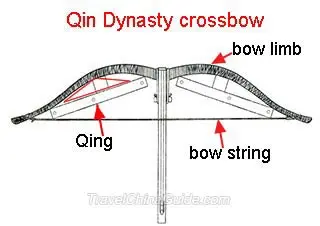
![]() In March of 2015, another crossbow was unearthed in Pit one. According to Zhang Tianzhu, the captain of the archaeological team, the crossbow is the most complete one that has been excavated. The bow back, bow string, crossbow body and newly-discovered Qing are all well-preserved.
In March of 2015, another crossbow was unearthed in Pit one. According to Zhang Tianzhu, the captain of the archaeological team, the crossbow is the most complete one that has been excavated. The bow back, bow string, crossbow body and newly-discovered Qing are all well-preserved.
Qing is a piece of rectangular woodblock used to keep the crossbow undeformed. The archaeologists say that two pieces of rectangular woodblock have been unearthed. Each Qing has three holes on the surface. When the crossbow is unused, Qing is tied to the bow limbs with three pieces of string through the holes. Also another tiny woodblock is placed between the bow arm and the Qing. Then a triangle is formed to keep the crossbow undeformed.
On February 26, 2014, the Qin Shi Huang Mausoleum Museum announced that a partly complete bow had been unearthed. The rough shape of the bow still can be recognized, showing bow back, bow arm, crossbow and bowstring. The bowstring is still well preserved, which is unprecedented since the whole Terracotta Warriors and Horse excavation. According to archeologists, the whole bow should be 1.4 meters (4.6 feet) long, the bow arm around 77 centimeters (2.5 feet) and the bowstring 1.2-1.3 meters (4-4.3 feet). They speculated that the bowstring was probably made of animals’ sinews.
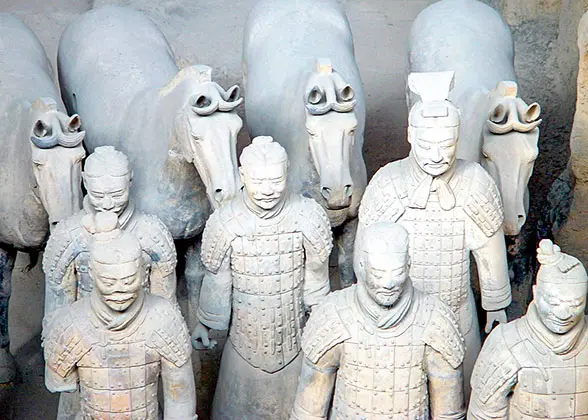 |
On June 9, 2012, the seventh China Cultural Heritage Day, Qin Shi Huang Mausoleum Museum announced the latest major archaeological achievements of the third excavation of terracotta Pit 1. 310 pieces of various cultural relics had been unearthed, including 12 pottery horses in three groups and 120 warriors. Besides, two chariots, two war drums, ten weapon handles, twelve crossbows and arrows, and one painted shield, had been cleaned up.
The four most exciting finds include the painted leather shield, a giant colored terracotta warrior with an amazing height of 2.5 meters (8 feet), 20 new seriously damaged acrobat warriors, and evidences indicating that Xiang Yu (232 - 202BC), a prominent military leader in the Qin Dynasty (221 - 207BC), was the most likely suspect to burn the warriors.
It is said that the third excavation work still needs three years to be done.
On June 13, 2009, on the fourth China national Cultural Heritage Day and 24 years after the second excavation, the third excavation of terracotta Pit 1 was started. This is the first individual excavation of Pit 1. The excavation zone is located in the north-central area of the Pit. It is planed that 200 square meters (239 square yards) in Pit 1 will be finished excavating in 2009, and in the following five years, the 2000 square meters (2,392 square yards) area in the north of the Pit 1 will be dug out. This will connect the east and west parts of the northern section of the pit.
The terracotta Pit 1 has been excavated twice. The first excavation occurred between 1978 and 1984 when 1,787 pieces of warriors were unearthed. The second excavation was in 1985 but was stopped in the same year because the equipment and technology at that time could not protect the precious cultural relics. Those two previous excavations only cover one third of the total area in Pit 1.
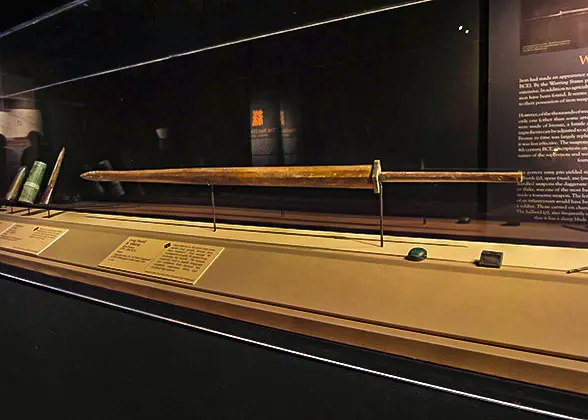 |
| Sword in Pit 1 |
Through experts' careful clearance, excavation and explanation, the excavation receives much on the first day. There are about six surprises which have opened visitors' eyes.
The First Surprise – Two four-horse chariots in close proximity
In the passageway No.G9, archaeologists surprisingly discovered two adjacent war chariots at the front and back. These "closely united" chariots are the first time to be discovered in the history of archaeology in terracotta warriors, because the other chariots discovered before all had rows of warriors stand between every two chariots.
The Second Surprise – Half of the face of a terracotta warrior retains its original paint
On the broken pieces of terracotta warriors buried in passageway No.G9, experts found colored paint. One body of a warrior is partly covered with brown paintwork and has red paintings on the arm. In the passageway No.G10, a warrior is preserved in near perfect condition with a clear hair bun and handlebar moustache. It is astonishing that half of his face is left with a large area of paint.
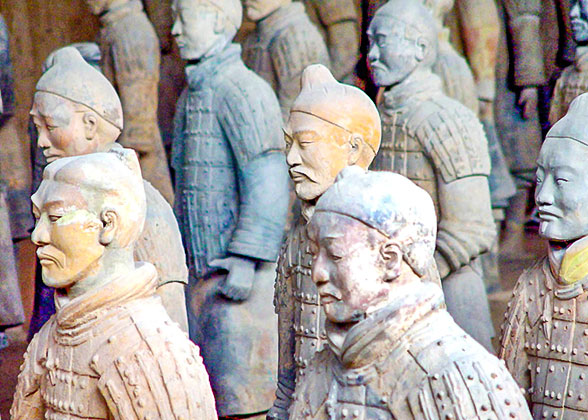 |
| The soldier figures in pit 1 |
The Fourth Surprise – A big wooden ring is painted in red and green. It has a diameter of 60 cm (24 inches). The colors on it remain bright. After reinforced in the field, the experts brought it back to the laboratory for further preservation and restoration.
The Fifth Surprise – Over 150 terracotta warriors, two horse chariots and eight terracotta horses will be unearthed in trial trench T23. Moreover, the lacquer work, colored drawing and organic substances will be well preserved during this excavation.
The Sixth Surprise – For the next few years, visitors will be able to see the excavation process while visiting the Pit 1. They will be able to witness the appearance of various cultural relics when unearthed.
![]() Five Expectations
Five Expectations
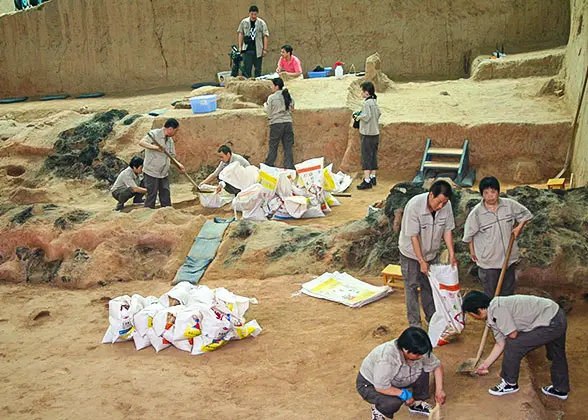 |
| Excavation Site |
Until October, four months after the beginning of the third excavation of Terracotta Warriors Pit 1, experts have retrieved two war chariots, eight remains of war horses, over 20 pieces of Terracotta Warriors and a large amount of components of chariots and bronze weapons. The excavation work still goes on.
![]() Recommended Tour Itinerary:
Recommended Tour Itinerary:
Terracotta Warriors Tour: One-day to visit Terracotta Warriors and Horses and more
More Xi'an Tours
![]() Next: Terracotta Warriors Pit 2
Next: Terracotta Warriors Pit 2